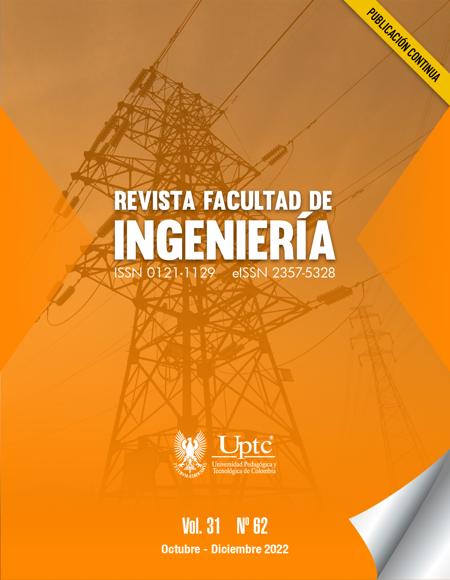Failed Co-Creation: The Case of the BCNStreet-Lab Project

Abstract
We present the results of the BCNStreet-lab project, a co-creation process of a prototype that "died before it even existed" and that has led us to reflect on the creative power that participatory design can have among experts. Examining the high variability that the design acquired with the co-creation sessions, we realized how an open co-creation process can generate overflows in the design. It makes innovation possible but can also lead to failure, as is this case, because of how risky participatory design of “fluid technologies” and how ineffective reproducing the Quadruple helix innovation model in small projects can be. We tried to account for the fruitful relationship between co-creation and the design of electronic technologies, which happens in the “lobby” of the technical design of the prototype. It generates negotiations and interactions that lead to progress in the democratization of design practices in electronic engineering, computing, and telecommunications. At this point, co-creation is conceived as a space in which institutional practices, social needs, technological imaginaries, economic interests, techno-scientific interests, etc., are brought together, translated and inscribed into the design of technologies.
Keywords
Co-creation, Engineering, overtechnification, sociomaterial variability, fluid technologies
References
- A. Barry, “Technological Zones,” European Journal of Social Theory, vol. 9, no. 2, pp. 239–253, 2006. https://doi.org/10.1177/1368431006063343 DOI: https://doi.org/10.1177/1368431006063343
- M. Callon, “Some Elements of a Sociology of Translation: Domestication of the Scallops and the Fishermen of St Brieuc Bay,” The Sociological Review, vol. 32, no. 1, pp. 196–233, 1984. https://doi.org/10.1111/j.1467-954X.1984.tb00113.x DOI: https://doi.org/10.1111/j.1467-954X.1984.tb00113.x
- M. Callon, P. Lascoumes, Y. Barthe, Acting in An Uncertain World: An Essay on Technical Democracy (Inside Technology). Cambridge: MIT Press. Eds.2009
- E. Carayannis, D. Campbell, "Triple Helix, Quadruple Helix and Quintuple Helix and How Do Knowledge, Innovation and the Environment Relate To Each Other?: A Proposed Framework for a Trans-disciplinary Analysis of Sustainable Development and Social Ecology," International Journal of Social Ecology and Sustainable Development, vol. 1, no. 1, e05, 2010. https://doi.org/10.4018/jsesd.2010010105 DOI: https://doi.org/10.4018/jsesd.2010010105
- E. Carayannis, D. Campbell, “Mode 3'and'Quadruple Helix': toward a 21st century fractal innovation ecosystem,” International journal of technology management, vol. 46, no. 3-4, pp. 201-234, 2009. https://doi.org/10.1504/IJTM.2009.023374 DOI: https://doi.org/10.1504/IJTM.2009.023374
- I. Farías, “Devising hybrid forums: Technical democracy in a dangerous world,” City, vol. 20, no. 49, pp. 549-562, 2016. https://doi.org/10.1080/13604813.2016.1193998 DOI: https://doi.org/10.1080/13604813.2016.1193998
- M. Haldrup, M. Hobye, N. Padfield, “The bizarre bazaar: FabLabs as hybrid hubs,” CoDesign, vol. 14 no. 4, pp. 329-344, 2018. https://doi.org/10.1080/15710882.2017.1378684 DOI: https://doi.org/10.1080/15710882.2017.1378684
- K. Henderson, “Flexible Sketches and Inflexible Data Bases: Visual Communication, Conscription Devices, and Boundary Objects in Design Engineering,” Science, Technology, & Human Values, vol. 16, no. 4, pp. 448–473, 1991. https://doi.org/10.1177/016224399101600402 DOI: https://doi.org/10.1177/016224399101600402
- T. Ingold, Bringing things back to life: Creative entanglements in a world of materials, Master Thesis, University of Manchester, 2010. http://eprints.ncrm.ac.uk/1306/
- A. Jiménez, “The Right to Infrastructure: A Prototype for Open-Source Urbanism,” Environment and Planning D: Society and Space, vol. 32 no. 2, pp. 342–362, 2014. https://doi.org/10.1068/d13077p DOI: https://doi.org/10.1068/d13077p
- H. Kärvi, A. Kähkönen, H. Torvinen, “When value co-creation fails: Reasons that lead to value co-destruction,” Scandinavian Journal of Management, vol. 34, no. 1, pp. 63-77, 2018. https://doi.org/10.1016/j.scaman.2018.01.002 DOI: https://doi.org/10.1016/j.scaman.2018.01.002
- M. Laet, M. Annemarie “The Zimbabwe Bush Pump: Mechanics of a Fluid Technology,” Social Studies of Science, vol. 30, no. 2, pp. 225–263, 2002. https://doi.org/10.1177/030631200030002002 DOI: https://doi.org/10.1177/030631200030002002
- K. Laursen, A. Salter, “Searching high and low: what types of firms use universities as a source of innovation?," Research policy, vol. 33, no. 8, pp. 1201-1215, 2004. https://doi.org/10.1016/j.respol.2004.07.004 DOI: https://doi.org/10.1016/j.respol.2004.07.004
- B. Latour, C. Porter, Aramis, or, The love of technology. Cambridge, MA: Harvard University Press. 1996.
- B. Latour, Pandora's hope: essays on the reality of science studies. Cambridge: Harvard University Press, 1999
- J. Law, M. Mol. “An introduction,” in Complexities: Social Studies of Knowledge Practice, Law and Mol.Durham: Duke University Press, 2002 DOI: https://doi.org/10.2307/j.ctv113144n
- T. Lodato, C. DiSalvo, “Institutional constraints: the forms and limits of participatory design in the public realm,” in Proceedings of the 15th Participatory Design Conference, 2018, pp. 1-12. https://doi.org/10.1145/3210586.3210595 DOI: https://doi.org/10.1145/3210586.3210595
- E. Manzini, F. Rizo, “Small projects/large changes: Participatory design as an open participated process,” CoDesign, vol. 7, no. 3-4, pp. 199-215, 2010. https://doi.org/10.1080/15710882.2011.630472 DOI: https://doi.org/10.1080/15710882.2011.630472
- N. Marres, “Participation as if Things Mattered,” in Material participation: Technology, the environment and everyday publics. London: Palgrave Macmillan, 2015 DOI: https://doi.org/10.1007/978-1-137-48074-3_1
- K. Mitzner, Complete PCB design using OrCAD Capture and PCB. London: Newnes, 2009.
- E. Ostrom, “Governing the Commons: The Evolution of Institutions for Collective Action,” Natural Resources Journal, vol. 32, no. 2, pp. 416-417, 1992.
- A. Phillips, “List,” in Inventive Methods, London: Routledge, 2012.
- S. Pfotenhauer, S. Jasanoff, “Panacea or diagnosis? Imaginaries of innovation and the ‘MIT model’in three political cultures,” Social Studies of Science, vol. 47, no. 6, pp. 783-810, 2017. https://doi.org/10.1177/0306312717706110 DOI: https://doi.org/10.1177/0306312717706110
- S. Star, "Infrastructure and ethnographic practice: Working on the fringes," Scandinavian Journal of Information Systems, vol. 14, no. 2, e06, 2002
- J. Sydow, G. Müller-Seitz, “Open innovation at the interorganizational network level–Stretching practices to face technological discontinuities in the semiconductor industry,” Technological Forecasting and Social Change, vol. 155, e036, 2020. https://doi.org/10.1016/j.techfore.2018.07.036 DOI: https://doi.org/10.1016/j.techfore.2018.07.036